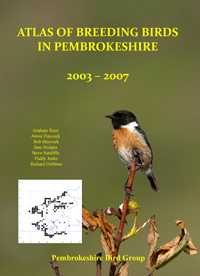Herring Gull - 2003-07
 Wednesday, May 9, 2012 at 6:10PM
Wednesday, May 9, 2012 at 6:10PM Only 40 years ago Herring Gulls could be found breeding in almost every cove and on every cliff around the Pembrokeshire coastline but in the early 2000s they are predominantly confined to the offshore islands. Unfortunately we know rather little about their historic numbers, perhaps because they appeared so common they were never counted. Indeed the eggs were widely collected for human consumption at least up to the 1960’s.
Herring gulls feed along the coastline, in the fields and formerly at rubbish tips and around the docks. They will readily take any food offered to them. Their ability to adapt to available food sources enabled them to increase in numbers dramatically, around 10% per year, between the 1950’s and the early 1970’s, when there was abundant waste available on rubbish tips and in the docks at Milford Haven.
The subsequent dramatic decline of c.80% in the early 1980’s was almost totally caused by a botulism outbreak which killed many hundreds of adult birds (Sutcliffe 1986).
It is clear from the map that Herring Gulls still breed all around the coastline of the county, but today mostly in small numbers and often on isolated offshore rocks. The main concentrations are on the islands and in particular on Caldey, where numbers have recovered from a low of 675 pairs in 1998 to just over 2,000 in 2008, making it one of the largest colonies in the UK. On the other islands the populations have not recovered: on Skomer and Skokholm it has been relatively stable at just under c. 450 to 600 pairs and 250 to 350 pairs respectively during the last decade. The islands of Ramsey and the Bishops hold around 300 pairs and there are small colonies of 50 to 200 pairs on St Margaret’s and Grassholm Islands, Dinas Head and along the Castlemartin coastline. The whole county population in 2003-07 was probably in the order of 4,000 pairs, compared with the peak 1969 counts of 12,700.
Steve Sutcliffe

Fieldwork 2003-07 (based on 490 tetrads)
Red = breeding confirmed = 69
Orange = breeding probable = 5
Yellow = breeding possible = not included
Total tetrads in which registered = 74 (15.1%)



Reader Comments